by Ilse Gebhard, KAWO member
One of my favorite butterfly books is an old one that my husband found for me at the Friends of the Library in Kalamazoo. Published in 1919, Butterflies Worth Knowing by Clarence M. Weed is more like a book you sit down to read rather than our present-day field guides, which are more like reference books. I found the account of the Baltimore Checkerspot especially interesting, particularly the part on the early life stages, which I had not had the opportunity to observe.
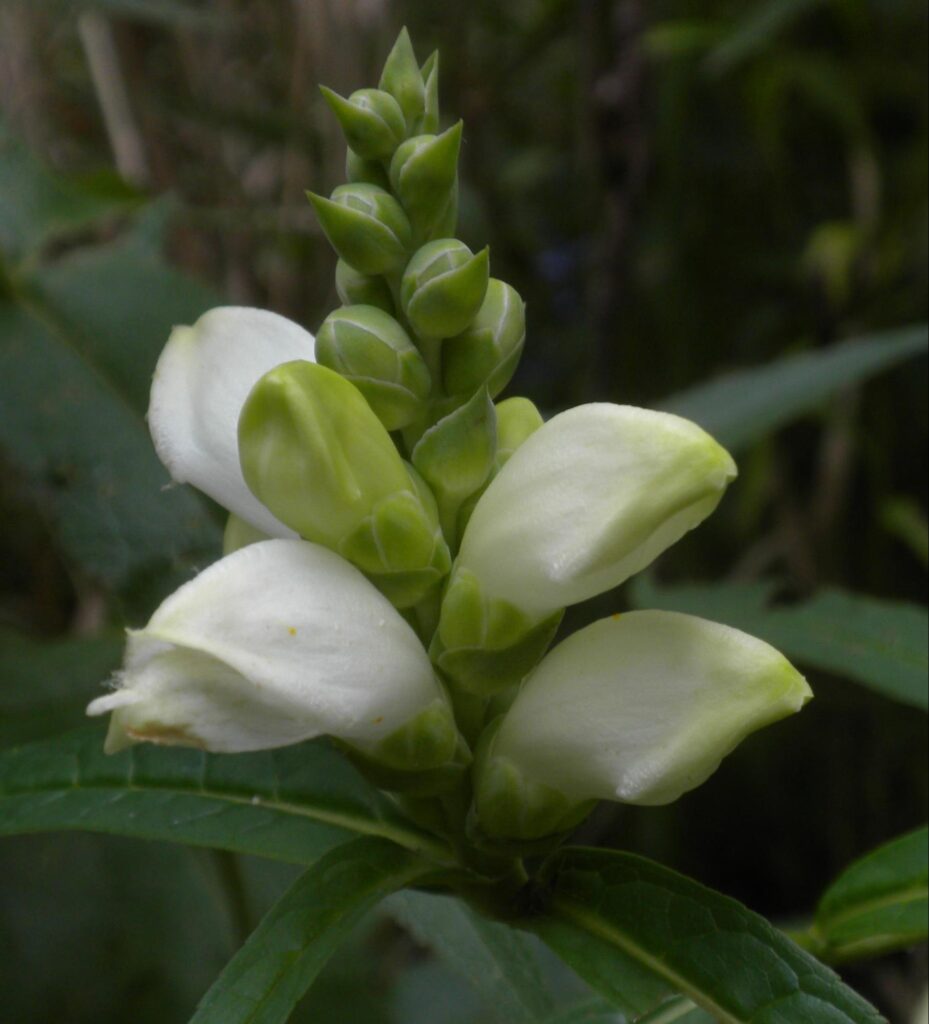
The Baltimore Checkerspot is single brooded, even further south, and the flight period in Michigan is late May to early August. It is during this time that the eggs are laid in bunches of one to four hundred on the host plant. Mogens C. Nielsen in his book Michigan Butterflies and Skippers lists Turtlehead or False Foxglove in the Figwort family as the host plants in Michigan.
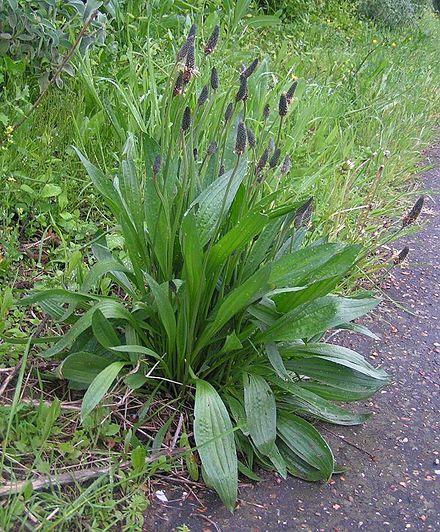
Three weeks after the eggs are laid the caterpillars emerge at the same time and stay together, spinning successively larger nests in which they feed and molt. After the third instar in late summer the caterpillars stop feeding and remain in the nest all winter. This eight-month fast is broken in early spring when they emerge from the nest and start feeding ravenously on the young leaves. It is at this stage that I found “Balti” a few years ago on May 6 in a grassy field. No Turtlehead or False Foxglove in sight, so I brought him home, where we had Turtlehead growing at the edge of the pond. Puzzled by the apparent absence of host plants, I looked in Jeffrey Glassberg’s book Butterflies Through Binoculars. He states that the usual habitat is marshes or wet meadows with Turtlehead but that in recent times they have been found in large concentrations in dry fields, feeding on English Plantain. Going back to the field, I did find English Plantain and also more caterpillars.
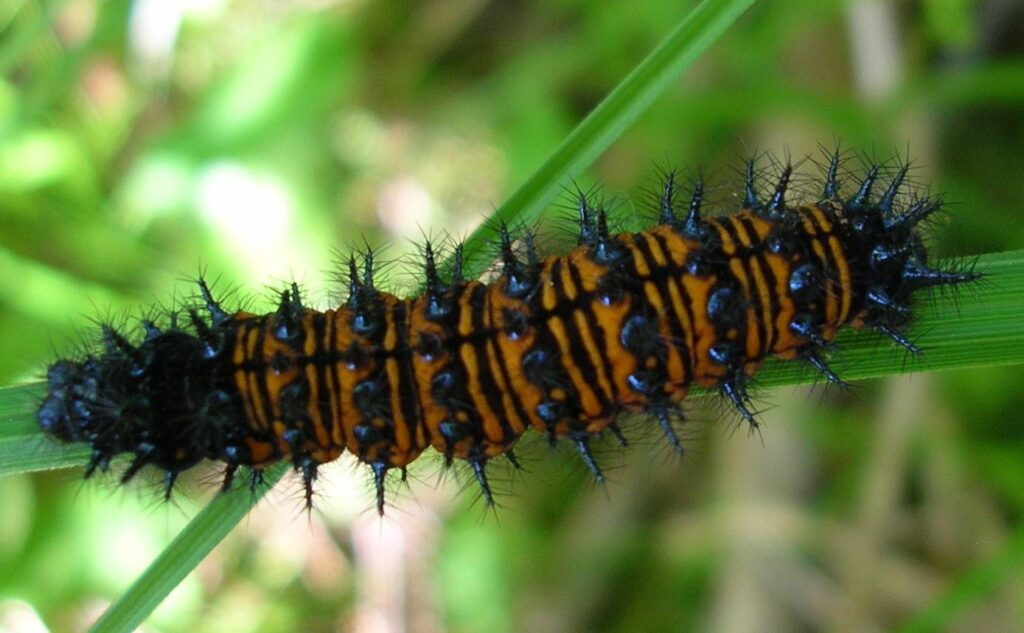
My husband accused me of being sexist since I tend to gravitate to “he” for caterpillars. Somehow “it” is too impersonal. Maybe the connection is little boys. Whenever I gave butterfly classroom presentations, I asked who liked butterflies and all hands would go up. Fewer hands were raised when I asked who liked caterpillars and comments like “yuk” could be heard from little girls.
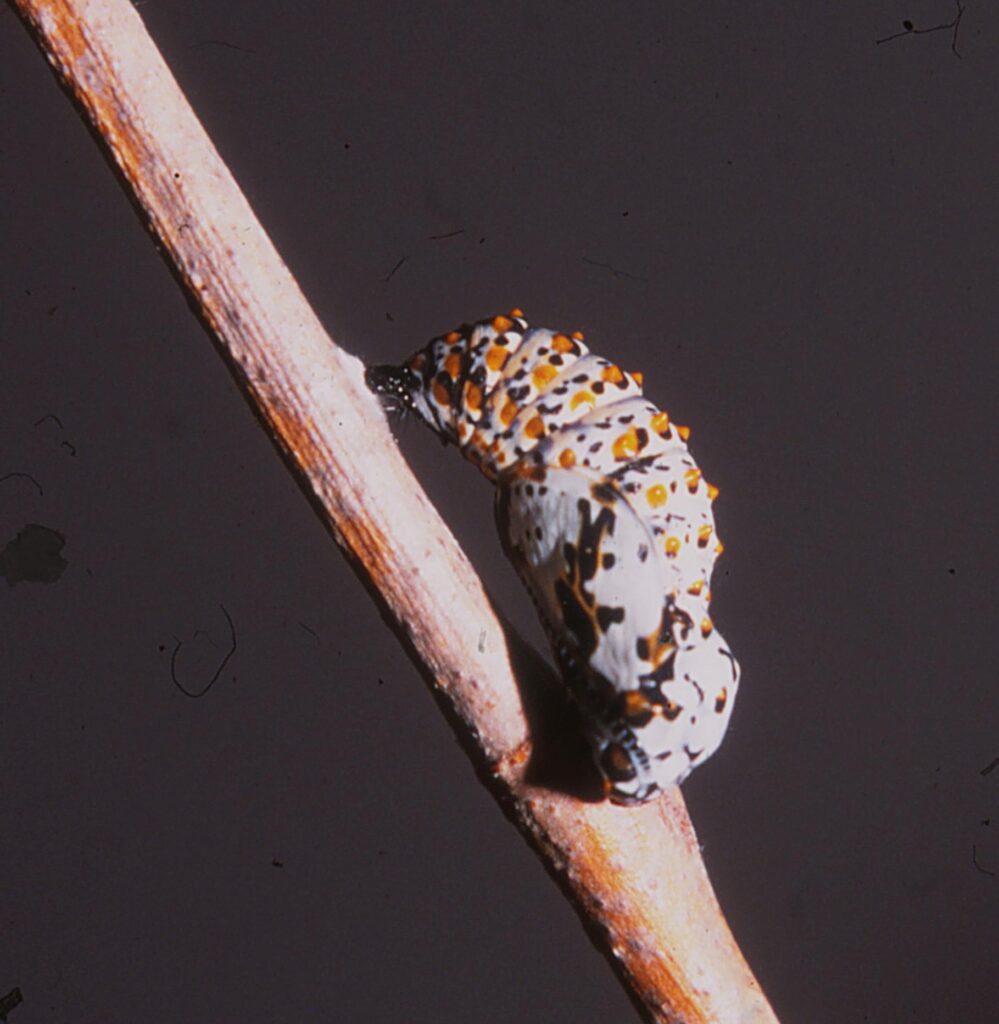
But I digress. Balti was ¾” long with a black head and black, branched spines. He was marked with narrow black bands between orange segments. At first he ignored the plantain leaves, but after shedding his skin he became quite a glutton, as evidenced by the amount of frass. On May 28 he attached himself to the provided stick and a day later formed the chrysalis, which was white with black and orange markings.
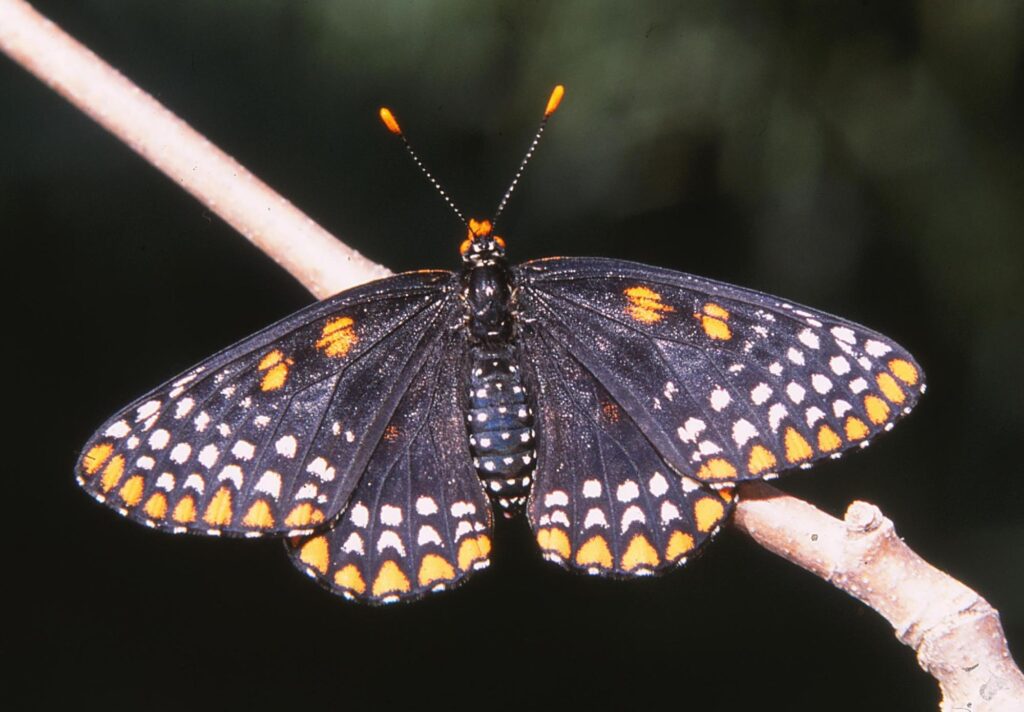
The butterfly emerged on June 18 and is one of the checkerspot butterflies named for their checkered wing markings. It was specifically named for Lord Baltimore because its orange and black colors match those on his heraldic shield. Dazzling with its black background and white and orange checks, the bright orange clubs at the end of its antennae really stand out. It is interesting to note that caterpillar, chrysalis and butterfly all have orange markings.
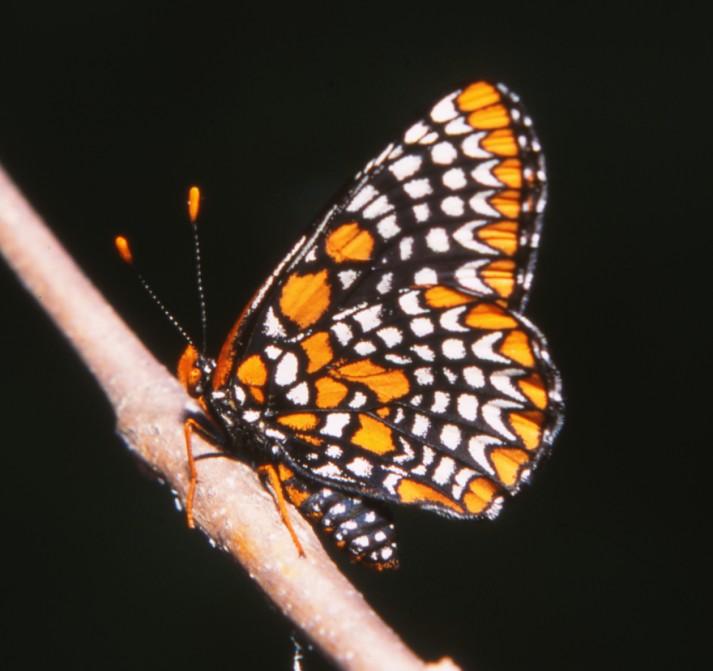
What is also intriguing to me is that a couple of the books mention not only variability in habitat preference but also in appearance. New England individuals are smallest with wide orange borders on the wings while the Ozark region individuals are largest, with narrower borders.
All photos are by Russ Schipper, except English Plaintain, which is from Wikipedia.
